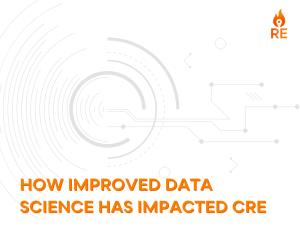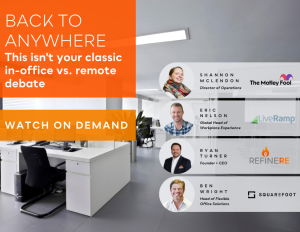Feature
Signs of an Unhealthy Real Estate Portfolio
No real estate investment is a sure thing. One day things can be on the upswing and you’re watching your assets grow. Then the next day there’s an unforeseen event that shifts the real estate market enough to completely erode your margins in a matter of weeks. What are you going to do? How do you gauge the health of your portfolio? Do you even realize your portfolio is underperforming?
The Answers Are in the Commercial Real Estate Data
If you have a commercial real estate portfolio, it isn’t a dire situation as long as you can recognize the signs of an unhealthy portfolio early and intervene quickly. Usually, all it takes is having access to the right CRE data. And sometimes not having data is the reason why a portfolio is underperforming and unhealthy in the first place.
4 Signs of an Unhealthy Commercial Real Estate Portfolio
Is your commercial real estate portfolio struggling, surviving, or thriving? Below are four common signs of a low-performing commercial real estate portfolio that signal change is needed.
Underperforming Assets/ No KPIs
The clearest sign of an unhealthy commercial real estate portfolio is underperforming assets. Of course, you’ll only recognize this sign if you know what is considered underperforming for an asset class. To do this you have to identify key performance indicators (KPIs). It may also require tracking the KPI data over time to determine what is underperforming for a specific asset in your portfolio.
Not having KPIs is just as bad a sign as an asset that isn’t performing as expected, because without them it’s hard to truly gauge performance.
Little to No Leveraging of Emerging Technologies
Top CRE industry organizations understand that it’s not enough to have data. You have to be able to collect it, report it, digest it, analyze it, and share it. Emerging technology is making this easier and easier with automation that does the manual work and predictive analytics that can help you foresee some future CRE market and economic events that will affect your CRE portfolio. If a portfolio is based on dated market data analysis that’s another unhealthy sign.
The Portfolio Isn’t Prepared to Pivot After a Market Shifting Event
Corporate and commercial real estate is locally-based, but it can be heavily impacted by world events. The COVID-19 pandemic is a perfect example of how a global event can throw an entire industry into a tailspin while at the same time creating entirely new industries.
Not being able to pivot could be a matter of bad timing or lack of diversification. Other times, this issue is due to riding things out too long. If you don’t have thresholds and metrics for triggering action, that’s an issue in and of itself. A real estate investor that utilizes data analytics to gauge the effect of global and local events is much better positioned to stay a step ahead and even identify investment opportunities. Meanwhile, investors that aren’t as proactive tend to be thrown off guard and have trouble regaining their footing.
Underperforming Corporate Occupiers
When you invest in corporate or commercial real estate, your success to a certain degree depends on your performance as a corporate occupier and the other occupiers of a portfolio. Underperforming corporate occupiers don’t keep close watch over their entire portfolio. They aren’t analyzing information or weighing options. They also aren’t using a strategic approach to making transactions and decisions.
In short, when a CRE portfolio has underperforming corporate occupiers that aren’t engaged, it’s a huge hurdle to get past.
Catch up on the latest from RefineRE:
Taking a Portfolio From “Unhealthy” to “Healthy” With Commercial Real Estate Intelligence
Let’s assume that your commercial real estate portfolio is exhibiting unhealthy signs. Something needs to be done, but you’re not exactly sure what. You’re not even sure what went wrong in the first place.
If your CRE portfolio is underperforming, there are ways to take control of the situation and change the trajectory. Fortunately, taking just five steps should set you on the right path.
Increase Commercial Real Estate Intelligence
Despite how the movies make it appear, a successful investment today isn’t based on a hunch, gut feeling, or the stars aligning. They are based on information. Commercial real estate intelligence can include a number of things from consumer surveys that point towards occupation trends to aggregated commercial real estate data that helps you optimize CRE office space.
If a commercial real estate portfolio isn’t anchored by intelligence, that’s the first step in turning things around. The information you gather can be used to identify where the problems lie so that you can focus on finding a solution.
Aggregate the Information
The one caveat is that information can flow from a number of sources. To truly use CRE data you’ll need a platform for corporate real estate that brings all of the data together where it can be visualized and analyzed comprehensively.
There are a variety of data analytics platforms available today that can do this, and many of them do a good job of aggregating information. But the best platform will be designed specifically for aggregating and analyzing real estate data. That way the reporting and tracking are more suitable to your needs.
Start Benchmarking to Gauge Performance
CRE benchmarking gives you a clear indication if a real estate portfolio is underperforming by giving you a comparison point. The more comparison points you have the better you can gauge the health of your entire portfolio. We’ve designed RefineRE to provide benchmarking technology for the commercial real estate industry as a whole, local markets, and asset class. From every perspective, you’ll know if your portfolio is performing up to par.
Identify Improvements and Changes
The benchmarking will tell you if things are going astray. Digging deeper into the data and using key performance indicators can give you actionable insights into why an asset is underperforming and how long the problem has existed.
You can use a KPI such as vacancy rate and cost per square foot to hone in on the problem. Once you’ve identified the problem, you can begin to search for ways to correct it. And after the changes have been implemented you can look at the KPIs again to quickly figure out if the changes had a positive effect.
Keep Aggregating and Analyzing Your Commercial Real Estate Data
The thing about data is that it’s always being created, and the commercial real estate market is always changing. The closer the data is to real-time the better it is for a commercial real estate portfolio’s performance.
Analyzing commercial real estate data helps you make more informed decisions, but it’s an ongoing process. That’s why it’s so important to find a system with sustainability for aggregating and analyzing data. As more data is created, your system needs to be able to expand with it so that you can continue to improve your commercial real estate company portfolio with the latest insights.
Ideally, your commercial real estate company portfolio will be powered by a real estate industry-specific analytics solution like RefineRE that can take you from unhealthy to healthy by giving you better actionable insights into your data.
Catch up on the latest from RefineRE:
Schedule a consultation with RefineRE
Here's what you can expect:
- ‣ A 15-minute call
- ‣ Identify your biggest challenges
- ‣ Explore automated solutions to optimize your strategy





